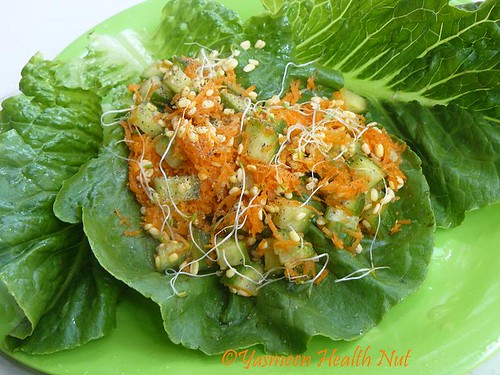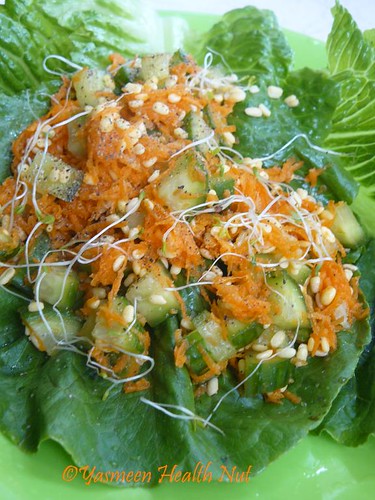
In Arlette's words-
"
The Arabic word Walima (banquet) is derived from the root word Walam, which literally means to gather and assemble. The Arabs used it for a meal or feast where people were invited and gathered to eat and celebrate for days, either for new born babies, a traveler returning home or for weddings.Later the term became exclusive for banquet celebration."
(The Logo is from one of Lebanese famous Painter, Mustapha Faroukh’s “Still Life Album".)
Walima cooking club celebrates Middle Eastern food.Each month foodies(members of the club) around the world cook a specialty dish of the region.The July 2009, Challenge was choosen by Talented Chahira from
Chahira's Cuisine.She choose 2 prominent dishes of Egyptian Cuisine,Koshary and Basbouussa.
Koshary
Koshary is one of the popular street foods in Egypt,its savored like the Chole chaat in India and Burger in USA.The layers of pasta,rice and lentils are topped with spicy tomato sauce,chickpeas and the crispy fried onions.This is complete vegan meal,the flavors are simple and spicy yet unforgettably delicious.
There is little one can go wrong with the easy recipe.I like the spice from the chili and sweet crispy bits of onion and with lentils,rice and pasta all in one ,the meal was thoroughly fulfilling.
Koshary RecipeIngredients1 cup brown lentils
1 cup rice (I used brown and wild rice blend)
1/2 pound whole grain pasta
1 1/2 teaspoon Salt
For the fried onions :
2 medium onions,sliced
2 tablespoon vegetable oil or extra virgin olive oil
For Spicy tomato sauce(salsa)2 cups tomato puree or 1 can(8 oz) crushed tomatoes
1/2 a medium onion,finely chopped.
3 garlic cloves, finely chopped.
1 teaspoon hot chili powder
1 teaspoon ground cumin
1/4 teaspoon ground pepper
1 Tablespoon white vinegar
1 tablespoon vegetable oil or extra virgin olive oil
 MethodCook lentils ,pasta and rice
MethodCook lentils ,pasta and riceCook all the 3 separately in salted water.
Cook the rice with 2 cups of water and some salt until tender but not mushy.set aside.
Cook the pasta in salted water until al dente,drain and set aside.
Cook the lentil in 2cups of salted water until tender about 30 minutes in a covered skillet and 9-10 minutes in a pressure cooker on medium heat.drain any excess water.
Fry the OnionsHeat the oil in a large pan,add the onions and saute until nicely brown,stir occasionally.When done transfer on to a paper towel to strain excess oil.
Prepare the tomato sauceIn the same pan ,Saute onions until soft, then add garlic and fry to a pale brown. Add tomato puree,chili powder,cumin and simmer for 15-20 minutes, until sauce is cooked and becomes thick . Add vinegar ,pepper and salt, cook 2-3 more minutes .
To serveArrange a layer of cooked pasta,lentils and rice on each of the serving plates.Top with tomato sauce and garnish with fried onions and cooked chickpeas .Serve with a bowl full of Dakka on side.
Suggested Accompaniment - Dakka(Vinegar cumin garlic sauce)Ingredients needed:
2 teaspoon cumin seeds ,coarsely ground
4 garlic cloves
1/2 a cup of vinegar
1/2 a cup of hot water
1 teaspoon of hot chili
salt and pepper
To make Dakka :
Take garlic cloves and hit them with the end of the knife, but don't break them up. Add into white vinegar and water mix. Add some cumin and coriander into the vinegar as well as salt and pepper and hot chili. Stir and let sit for an hour.Serve on side with Koshary.

Basbouussa(Semolina Cake)
Most celebrated dessert of Egypt,is also famous in other Arab countries.The following is Chahira's Egyptian Basbouussa with Semolina,coconut and yogurt.I made few changes in the sugar and fat quantities,my usual fiddling to make a dessert lower in fat and sugar(Hope you don't mind chahira).
I always spotted this dessert in the middle eastern stores,is almost as popular as baklava.The tantalizing dessert had nice and moist texture,I was pleased to be able to bake one fresh at home.
 RecipeIngredients
RecipeIngredients2 cups fine Semolina(sooji) or semolina flour
1 tablespoon baking powder.
1/2 cup dry coconut
3 tablespoon pure ghee(vegan substitute :Virgin pressed Coconut oil)
1 tablespoon Orange blossom water or rose water or 1 teaspoon pure vanilla
1 cup fat free yogurt.(vegan substitute :Soy yogurt)
1/4 cup white or brown sugar(or use half agave nectar & half sugar)
For lite sugar syrup1/2 cup white or brown sugar*(or use half agave nectar & half sugar)
1 cup of water
1 teaspoon lemon juice.
1 tablespoon orange blossom water or rose water
Tahini and some butter to grease the baking tray.
1/2 cup whole or chopped nuts for garnish(I used almonds)
*for heavy syrup use equal quantity of water and sugar.
MethodIn a large bowl,mix the semolina, baking powder, coconut, sugar, ghee, yogurt and blossom water until smooth and well incorporated.
Grease the baking dish little bit of butter(or coconut oil) and tahini, you can use just Tahini.Pour your basbouusa dough and spread it evenly .Garnish it choicest dry fruits and nuts,insert them partially in to the mixture.Set the tray aside for at least an hour.
Bake Preheat oven to 350F.place the dish in the middle rack of the oven and bake for 35-40 minutes until the top is golden brown.
 Prepare the syrup
Prepare the syrupWhile the basbousa bakes,prepare the syrup.Boil the sugar,blossom water and water in a small saucepan,until bubbly and in thread point stage.Pour the warm syrup over the warm basbousa.let the flavors soak in for an hour at least.Then slice in squares and serve.

Thank you Chahira for the delicious picks.And Thank you
Arlette for making me a part of this exciting club.To join the creative team ,write to Arlette(phoeniciangourmet@sympatico.ca).










